Folk methods
In most cases, you can remove a blockage at home without using special means. Look in your kitchen cabinets, you can probably find everything you need in every home.
Check out a selection of ideas for perfect order in your kitchen cabinets.
Hot water
First of all, try to remove the blockage in the sink with ordinary hot water: it copes especially well with fatty deposits on the walls of sewer pipes.
- Boil ~1-1.5 liters of water in a kettle or saucepan, slowly pour the entire volume into the sink drain.
- Wait 10-15 minutes – turn on warm running water, check how well you managed to clear the blockages.
- Problem not solved? Proceed to the next options.
Important! If the pipes are plastic, it is better to cool the water to 70-80C. To do this, leave the kettle open for 10 minutes after boiling.

Vacuum cleaner
When debris has gotten into the drain hole or the blockage in the kitchen sink has formed very recently (has not yet had time to form a dense lump), a vacuum cleaner can help. There are 2 options for use:
- Blowing out. Does your assistant have a blowing ability? Attach the end of the hose to the drain, make the joint sealed (with your hand, a rag, a rubber band), turn on the power. A powerful stream of air will help push the dirt further down the drain.
- Blowing. A regular vacuum cleaner can suck up small debris located near the drain. To clean, tightly connect the hose to the metal grate, create a vacuum at the joint (needed to build up pressure), turn it on. After a couple of minutes, turn off the vacuum cleaner, pour boiling water down the drain to be sure.
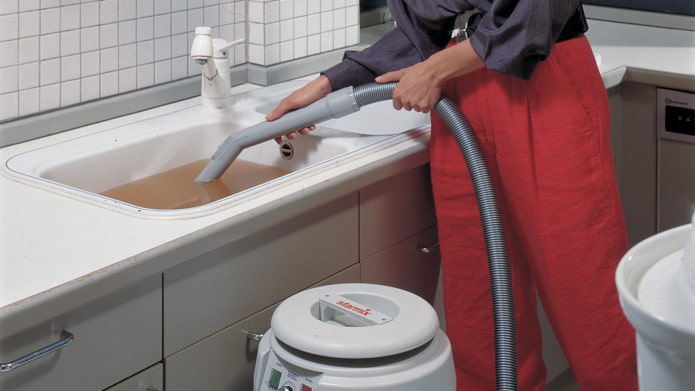
Soda
Sodium bicarbonate, also known as baking soda, has found its application not only in cooking: it is used to wash dishes, wash clothes, and clean plumbing. And children at school use it to conduct experiments or simulate a volcanic eruption.
It is due to the chemical reaction that soda gives when in contact with irritants that it can quickly clear blockages in the kitchen without damaging plastic pipes. There are 2 main uses for soda:
- Soda + salt + boiling water. One of the best anti-fat compounds that is always at hand. Mix 1 cup of soda, ½ cup of salt, pour into the kitchen sink. Pour a glass of boiling water on top: a hissing sound will begin to come from the sink, which means the water and soda have reacted. Leave for 20 minutes, pour in another 1-1.5 liters of boiling water – the blockage is gone!
- Sodium bicarbonate + vinegar. When the sink is clogged with organic waste (for example, you washed dishes and food scraps got into the drain), you can get rid of waste and unpleasant odors yourself using this “sweet couple”. Carefully pour 120-150 g of soda into the hole, pour the same amount of 6-9% vinegar on top – the foam formed during the reaction of acid and alkali will corrode the cause of the blockage in the sink. Wait a couple of minutes, turn on a strong stream of hot water – the problem will melt before your eyes.
Important! Wear rubber gloves when handling any acids, alkalis, or household chemicals.
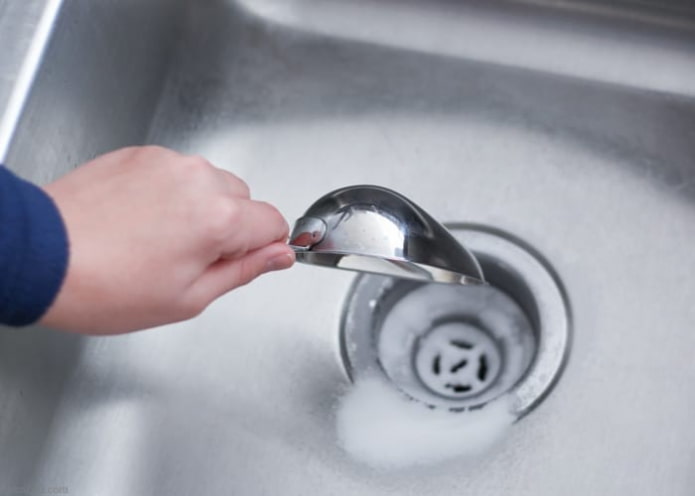
Vinegar
Acid alone cannot remove a complex blockage; it needs an alkali as a pair: this can be either baking soda (the method is described in the previous section) or baking powder (which also contains sodium bicarbonate).
- Take 100 g of baking powder and table salt.
- Mix and pour into the pipe. The second in order is pouring 70 g of vinegar up to 9% (it is better to warm it up a little).
- Then we act as with soda: leave for a couple of minutes, rinse the sink with hot running water.
With the help of vinegar you can also remove the smell in the refrigerator.
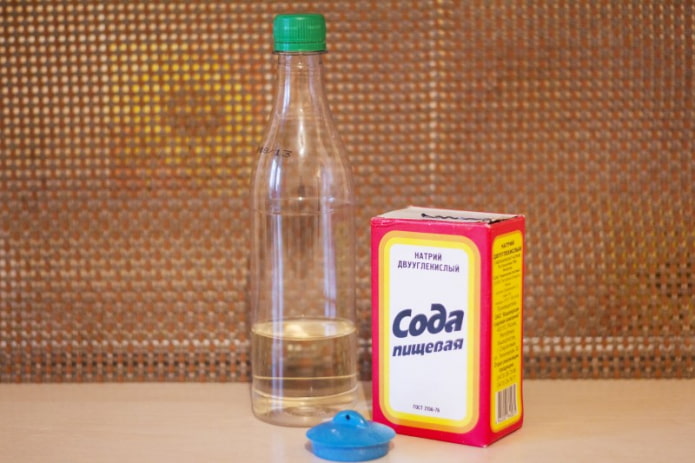
Citric acid
When cleaning blockages at home, use natural citrus acid (from lemon) or chemical carbonic acid C(8)H(8)O(7). Both options are convenient, but the second is more reliable.
So, to clean the sewer without a plumbing cable, prepare a solution: you will need 0.5-1.5 liters of water (depending on the severity of the situation). Pour white crystals of citric acid into the liquid at a rate of 20 g per 500 ml, bring to a boil.
- Pour boiling water into metal pipes. Is the plumbing material polypropylene? Cool the acidic water to 80C (10 minutes with the lid open).
- Check the effect after 20 minutes: turn on the water.
- No more stagnation – the problem is solved!
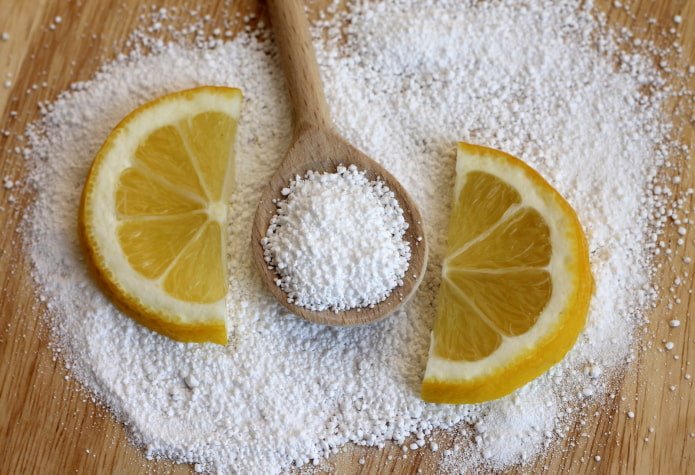
Professional tools and methods
When home methods do not work or you do not want to waste time on them, seek advice from professionals or simply use their tools.
Plunger
A tool for mechanical cleaning of pipes should be in every home: it is rarely used, but when the need arises, it is good to have one at hand. You can buy it in hardware or plumbing stores.
Unlike chemicals, a plunger will work mechanically: create pressure that will push the blockage. How to use it correctly:
- fill the sink with 1-2 cm of water;
- put the plunger firmly against the drain hole;
- make 3-5 up-and-down movements;
- sharply “pull out” the plunger, tearing it off the bottom.
Cleaning the blockage can happen the first time (the water will drain well). Or repeat the procedure until you get the desired result.
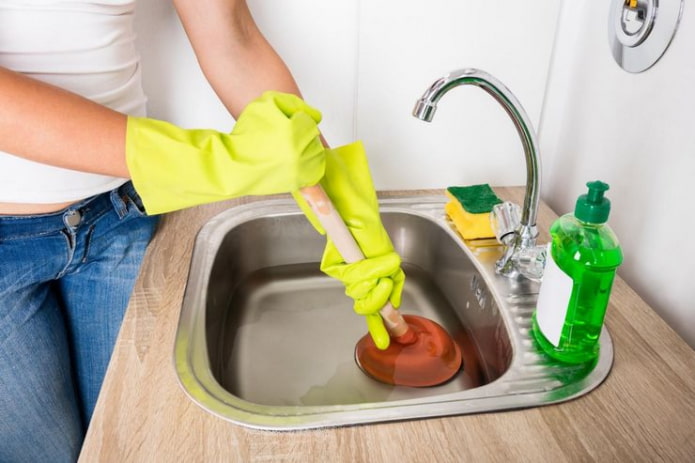
Plumbing cable
A small blockage can be cleared by one of the previous methods, but for a serious problem you need special equipment: in this case, a cable.
Important! Doubt the success of the independent operation? Call a plumber! Clearing a blockage is cheaper than replacing damaged pipes.
To clear a blockage:
- Disassemble the trap under the sink.
- Insert the cable into the pipe behind the trap.
- Carefully twist and move it along the pipe until you hit the blockage.
- Move clockwise, back and forth, to catch the debris or break it up.
- Pull out the cable along with the plug, reassemble the trap, and rinse the pipes with running water to remove any remaining blockage.
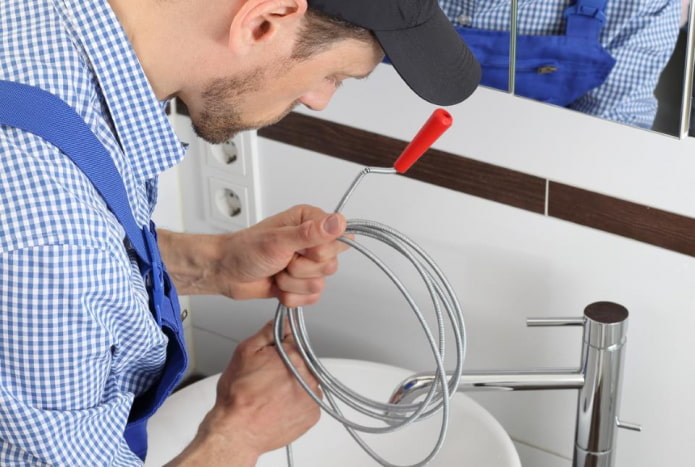
Household chemistry
The advantage of soda or citric acid is that they are inexpensive and can be found in almost every home. However, household chemicals specifically designed to solve the problem of blockages are more convenient to use and cope with the task better.
The most popular products:
- Mole. You can find bottles from different manufacturers on sale, the effectiveness is approximately the same. The basis is alkali + salt.
- Tiret. The main active ingredient is chlorine.
- Pothan. Alkaline product, safe for pipes.
- Mr. Muscle. Contains salt – sodium hydroxide.
Alkaline, chloride or saline product will work approximately the same: pour into the sink, wait for the time indicated on the package, rinse. It is necessary to wait for the action time, it is necessary for the liquid to reach the place of blockage and have time to dissolve it.
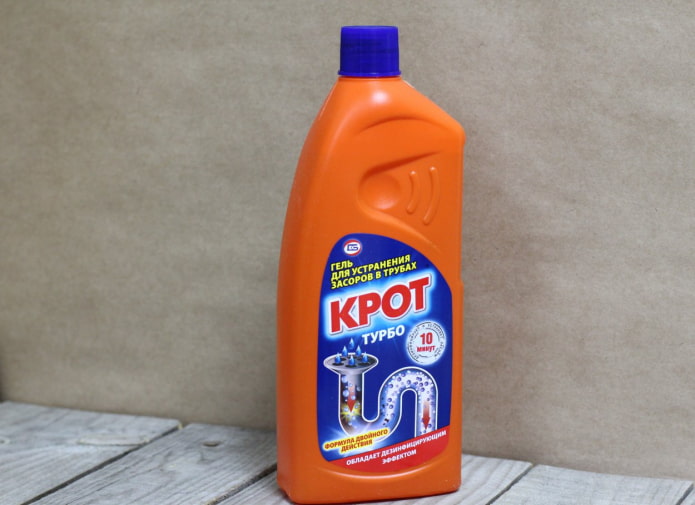
How to disassemble and clean the siphon?
Chemical compounds did not help or you cannot use them because of allergies? There is only one way out: unscrew the siphon and clean it manually.
To do this:
- Turn off the water supply valves.
- Place a basin or cup under the drain (when you remove the bottom part, water will flow).
- Unscrew the bottom of the sink and let the water drain.
- Clean the siphon from dirt.
- Screw it back.
Important! Don’t forget to check for leaks after assembly. Is the siphon leaking? Seal the threads.
Prevention
With a blockage, as with any other problem, it is easier to prevent it from occurring than to fix it. To ensure that water drains well in pipes, follow these preventive measures:
- Use a protective mesh to prevent large debris from getting into the pipe.
- Clean any food debris from the sink before placing dishes in the sink.
- Vegetable oil, butter, or melted fat from frying should not be poured down the drain! Pour it into an unnecessary bottle or bag and throw it into the tank.
- Collect hair after washing or combing in a bucket; do not let it get into narrow pipes.
- Flush the drain with boiling water or special household chemicals from time to time.
What should never be flushed down the sink?
- Flour. Everyone knows what happens to flour when it comes into contact with water: it becomes a sticky, swollen lump that clogs the drain. For the same reason, do not wash off semolina or starch.
- Coffee. Particles of ground aromatic powder settle on the walls, eventually leading to a blockage.
- Rice. Rinse boiled cereals very carefully: when rice grains get into the sewer pipe, they stick to each other and to other food.
- Paint. Or other viscous construction liquids – the reason is clear.
- Shells. Small sharp particles will not do anything on their own, but their corners cling to other food, forming a garbage “snowball”.

Many people face blockages: now you know that you can even eliminate them with your own hands. But in serious situations, do not delay in calling a plumber. A specialist who arrives on time can save you from replacing pipes, flooding neighbors and other unpleasant situations.
Now reading:
- Important aspects of choosing plastic windows: 8 main recommendations.
- Bathroom Tiles: 80 Interior Photos and Current Design Ideas
- Chandeliers for suspended ceilings: 50 examples and selection tips
- Canopy Beds: 50 Inspiring Photos for Bedrooms and Kids Rooms.
- Brown Wall Wallpaper: 99 Unique Ideas for Living Room, Kitchen and Bedroom